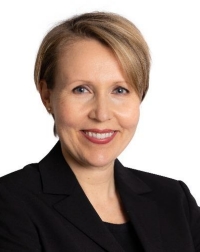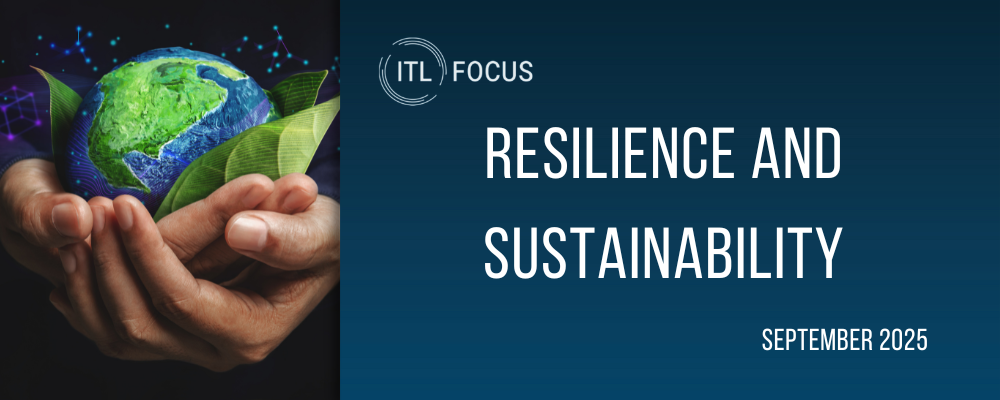Climate risk is yet again front-page news. Early estimates of total economic loss from Hurricane Helene and its aftermath amount to $145 billion to $160 billion. However, the early estimates of insured losses for the event are significantly lower, at $5 billion to $10 billion. If these estimates turn out to be accurate, this would make the ratio of insured loss to economic loss the smallest among U.S.-landfalling hurricanes in recent decades and point to a significant protection gap.
With that context, ITL Editor-in-Chief Paul Carroll talked with Veronika Torarp, a partner with PwC, about how insurers can help improve climate resiliency.
Paul Carroll
To start, I'm curious how you are thinking about climate resiliency at PwC and how you're advising your clients to address the issue.
Veronika Torarp
Climate risk and climate resiliency are two of the most pressing issues facing our clients today. PwC was one of the lead sponsors of this year’s Climate Week in New York City, and it seems that the topic of adaptation and resiliency has moved to the forefront of conversations around climate. I think there's a great opportunity for insurers to be more involved in these dialogues, both in the U.S. and globally, about how we protect our communities in light of more severe weather.
We're advising our clients to engage more broadly with stakeholders, to work with communities and regulators to come up with practical solutions and start to mobilize action. There’s so much at stake, not just for insurers but for impacted communities, for businesses that operate in those communities, and for the people who live there.
Paul Carroll
I'm interested that you use the word “community” because talk about community-based solutions was one of the things that struck me at a recent climate event in Atlanta – which I just discovered you attended, too, even though we somehow didn’t meet during a two-day gathering of just 100 people or so. I had a home in Lake Tahoe for many years, and if I didn't take care of my manzanita, that put my neighbors’ homes at more danger of wildfire, and vice versa. So community-based approaches to mitigating risk make a lot of sense to me.
Veronika Torarp
If you take this broad topic of climate resiliency and bring it down to the community level, a lot of pain is felt by city managers and other community leaders. They see the effects when a storm comes through or damage is done, to the extent that insurance isn’t available. There are real economic hits. Beyond the immediate effects, your tax revenue base may be affected if residents lose their livelihood or move out of the area.
So this notion of community-based solutions is something we absolutely believe in. I know there are discussions emerging in the industry about community-based insurance programs, and they’re certainly worth exploring further.
I also think there's a lot more that could be done around predicting and preventing losses. For example, we could do more to help communities finance and put up steel roofs for homeowners to prevent hail damage. We could enforce better building codes, though that can take time to have a major effect. We could implement nature-based solutions to mitigate the impacts of storms and wildfires. There are a number of resiliency interventions that could be activated at the local level that could really help protect communities more effectively than they're being protected today.
Insurers can also develop new types of products and solutions. That could include parametric products that afford consumers some level of protection that's not a traditional, admitted policy. If you think more broadly, why can’t we create a resilient building certification, along the lines of the certifications that are now available for “green” buildings? A resiliency certification that’s codified would encourage people to build to the best standards both before and after damage occurs.
Paul Carroll
In a webinar you did recently, I was struck by something you said about municipalities that touches the other side of the balance sheet: the assets. You noted that many insurers invest in municipal bonds and could be affected as increasingly severe weather takes its toll on infrastructure and government properties.
Veronika Torarp
Yes, municipal bonds tend to be a large asset class for many insurers, and as we see more intense storms, wildfires, droughts, and floods impose higher costs on state and local governments, that's putting pressure on the spending side. At the same time, on the revenue side, storm damage and insurance risk can undermine the municipal tax base. These ultimately impact the ability of municipalities to service their bond payments and raise new capital. Moody's and other rating agencies have actually started to downgrade some municipal bonds as a result of looking at the climate risks. That could have a negative impact on insurers that invest in these bonds.
Paul Carroll
Another idea that popped for me in Atlanta was the idea of possibly insuring against extreme heat. Heat is obviously a factor in hurricanes, convective storms, hail, and a bunch of other things, but what do you think of possibly insuring against extreme heat’s more direct effects on people and property?
Veronika Torarp
I think there are lots of opportunities to innovate and afford consumers and businesses more protection. This is another area where there's an opportunity for prevention, through different ways to help with cooling and generally reduce exposures. That certainly will have implications on workers’ compensation and other lines, such as business interruption, when operations are affected by extreme heat.
The first step for insurers is understanding the risk exposure that more severe heat is introducing to the lines they're already writing and products they’re already offering their clients. Once you understand what that risk profile is, there's also an opportunity to think about if you can introduce specialized coverage or specific endorsements or specific products around heat exposures.
We’ve recently written a paper on the impacts of heat stressors and implications on mortality risk for life insurers, and there are certainly implications on accident and health and other P&C lines, as well.
Paul Carroll
To me, a tricky issue with climate is figuring out who pays the up-front costs of prevention, and making sure those payers collect the benefits. If I’m an insurer thinking of investing in mangroves as a nature-based approach to mitigating the damage that a major storm can do to a shoreline, the residents of the area certainly benefit, but how do I, the insurer, benefit enough to justify my investment? There can also be a timing issue, because some of these solutions, such as mangroves, will talk a long time to pay off. I know I’m asking a fuzzy question.
Veronika Torarp
Another way to ask the question, perhaps, is in terms of who pays for resiliency interventions, whether it's investing in nature-based solutions or investing in a steel roof. These go beyond what insurance companies can possibly pay for, so the challenge is how to arrange incentives that encourage these types of interventions. This is where some creativity is going to be required, and collaboration across stakeholders.
Communities can tap into federal funding that's available for some of these resiliency interventions today. More than anything, insurers can bring more clarity to what the types of interventions are that would have the biggest impact on loss mitigation, and ultimately, the cost of insurance. That's one of the reasons insurers need to be at the table. They have more insight and data than arguably anyone on what the leading causes of losses are and what can be done to prevent future losses, in terms of specific interventions.
But I will also say there are lots of resiliency interventions that don't necessarily have to be cost-prohibitive, such as clearing brush close to your property to reduce your wildfire exposure.
Paul Carroll
What other innovations should we talk about?
Veronika Torarp
There's a lot of emphasis on the incremental investment that we're going to need to address climate issues, and a really important point that sometimes gets lost is that we’re already making a lot of capital investments. Just as an example, I think the Army Corps of Engineers budget for next year is $9 billion. Are they spending that money based on standards that will result in more resilient bridges and other infrastructure? I don’t know. But we should be having conversations with them about the best standards to apply.
In the same way, after disaster strikes and homes get destroyed, we can make sure we rebuild those homes to a more resilient standard. We’re going to spend the money anyway. Let’s make sure we spend it judiciously with climate risk mitigation in mind.
The other point I’d make is that generative AI can have a transformational effect for society at large, and I get excited about how we can leverage it to generate analysis and advice that lead to better decisions, whether around resiliency investments or interventions.
We need to make more climate-savvy decisions about insurance and risk, and there's a lot of opportunity to explore what could be possible with new technology available to us.
Paul Carroll
We’ve covered a lot of territory, but do you have any final thoughts?
Veronika Torarp
I’d just emphasize that there is an opportunity for the insurance industry to lead here. At PwC, we recently published a paper on how insurers can lead on climate resiliency.
Historically, insurance has been a very cautious industry, but there’s a lot at stake, and insurers can have a significant voice in ensuring that we build more resilient communities going forward. I invite the industry to lean in and lead. There's a lot of opportunity.
Paul Carroll
That’s great. Thanks, Veronika.
About Veronika Torarp
 | Veronika is a partner in PwC Strategy&’s insurance practice. She has close to 20 years of experience consulting Fortune 500 companies on growth strategies in the U.S. and internationally. Veronika leads PwC’s sustainability strategy to the insurance sector and regularly provides forward-looking perspectives on the global insurance industry, most recently in “Climate risk and insurance: the case for resilience” and “Insurance 2025 and Beyond: Insurance reimagined: Spotlight on trust, convergence and transformation.” Before joining PwC, Veronika led market development and served on the climate change committee for Travelers Insurance. She received her MBA from IMD Business School in Switzerland and a B.S.B. from the Carlson School of Management at the University of Minnesota, where she serves on the advisory board for the Masters of Business Analytics. Veronika will be moderating a panel on the topic of climate resiliency at Triple I’s Joint Industry Forum, which will be taking place in Miami Nov. 19 and 20. |








